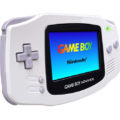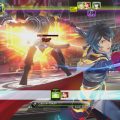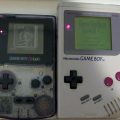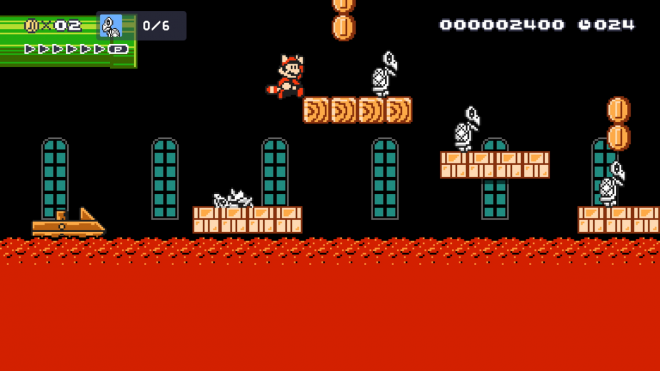GameCube Retrospective – The Little Cube that Could (Angela’s Picks)

The GameCube was released in Japan on September 14, 2001 and later in North America on November 18 of the same year. Unlike the PlayStation 2, the launch of the GameCube was a low key affair among my gaming friends. It didn’t get much buzz in my circles and gaming news wasn’t very ubiquitous in 2001 compared to now. Nintendo’s offering for the six generation of gaming used mini DVDs instead of full-sized DVDs/CDs. The system also was purely focused on gaming and lacked the ability to play multimedia. While it was nice to see Nintendo ditching cartridges in favor of discs, the offering felt lacking compared to the PS2 and Xbox.
Third party support for the GameCube was vastly improved over the N64 and the system even scored a few exclusives such as Resident Evil 4 and Metal Gear Solid: The Twin Snakes. (Though in the case of RE4, it was ported to the PS2 in short order.) Leaving cartridges behind also allowed the system to receive ports of games from other systems– the recently discontinued Sega Dreamcast being one example. Like other consoles, the GameCube could support online network connectivity via a broadband adapter, though the number of games that used this feature were quite limited. The console also introduced wireless controllers in the form of Wavebirds, which became rare shortly after the Wii was released. The GameCube controller was a step up from the N64 controller, even if the C button wasn’t a full-fledged analog stick.
Despite Nintendo’s efforts, their fourth console failed to recapture past glory. It performed worse than the N64 in terms of worldwide sales. The lackluster sales of the GameCube (21.74 million) would make it the lowest selling Nintendo console until that miserable record was broken by the Wii U which stalled at 13.56 million units sold. Once the Wii was introduced in 2006, the GameCube was quickly forgotten, but would go on to live through the Wii’s backwards compatibility.
It wouldn’t be a retrospective without mentioning my favorite games on the system:

Pokémon Colosseum | Developer: Genius Sonority | Publisher: Nintendo, The Pokémon Company | Release: 2004
Pokémon Colosseum wasn’t the full console RPG fans wanted, but it was still an interesting experience. Instead of being developed by GameGreak, Genius Sonority was given the task. The game was set in a new desert region called Orre. The protagonist of this series was Wes, a former member of the gang Team Snagem. Through Wes, players spent their time rescuing pokémon whose hearts were darkened by Team Cipher after they were stolen from their original trainers. Just think Team Rocket, but more evil and effective. The story mode played like an RPG, but random battles and the ability to capture wild pokémon weren’t present. Players had to acquire pokémon by taking them back from teams Snagem and Cipher and purifying their hearts. The colosseum parts of the game played much like Pokémon Stadium, but with much better graphics.
As a teenager I was absolutely in love with Pokémon Stadium. So getting Colosseum while in college was a no brainer for me. While I enjoyed the nicer graphics, getting through the game’s story mode was a slog. Capturing shadow pokémon and changing their hearts wasn’t as rewarding as capturing wild monsters. The battle tower mode was so much of a chore that I never finished the challenge. Still, the core gameplay elements that make Pokémon fun were present in Colosseum and the game did well enough to garner a sequel.

Fire Emblem: Path of Radiance | Developer: Intelligent Systems | Publisher: Nintendo | Release: 2005
When Fire Emblem: Path of Radiance was released in North America it was the third Fire Emblem title to be released in the West and the first to be released on console. In Japan it was the first console offering the series had seen since Fire Emblem: Thracia 776 on the SNES. Path of Radiance was similar to its handheld counterparts, except the game was now fully 3D. In the transition the beautiful spirt work was replaced, but the over-the-top attack animations were still present. At the time, the graphics were impressive even if they might not have aged as well as the 2D games. This console entry did well enough on console that Nintendo continued the trend with a direct sequel in the form of Fire Emblem: Radiant Dawn. The series hasn’t been back on console since the Wii, but that is set to change with the upcoming Fire Emblem: Three Houses on Switch.
When Path of Radiance was released, I picked it up shortly after launch. Previously, I had played Fire Emblem and Fire Emblem: The Sacred Stones. The Game Boy Advance releases were my first forays into tactical RPGs and I was hungry for more. I was amazed and impressed by the graphics at the time. PoR was the first game where I took note of support conversations, and tried to complete them. One big addition to the gameplay was the Laguz, people with the ability to fully transform into animals. They made for interesting units and opponents, which didn’t always neatly fit into the weapons triangle system. The tough as nails gameplay, also stood out to me as opportunities to revisit maps were rare and the lack of an arena meant limited level grinding. This was one of the hardest Fire Emblem titles I’d played until Fire Emblem Fates: Conquest. Difficultly aside, this game was addictive as I often played alone or with friends for hours on end. After 14 years Fire Emblem: Path of Radiance still holds a special place in my heart.

The Legend of Zelda: Twilight Princess | Developer: Nintendo EAD | Publisher: Nintendo | Release: 2006
The reveal of The Legend of Zelda: Twilight Princess was an interesting affair. Its release followed The Legend of Zelda: Wind Waker, which some considered to be controversial at the time. Many fans disliked Wind Waker because of the cel shaded graphics and cartoonish look, especially when compared to The Legend of Zelda: Ocarina of Time. So years later when Twilight Princess and its darker, more realistic graphics and adult Link were revealed at Nintendo’s 2004 E3 press conference the reactions were overwhelmingly positive. People cheered non-stop and some even cried. The game would go on to be released two years later as a split-generation title. It released first on the Wii as a launch title and a month later on the GameCube, despite starting out as a GameCube title. The game sold 8.85 million copies on both consoles and it was the recipient of multiple awards. In fact, The Legend of Zelda: Breath of the Wild only recently dethroned Twilight Princess as the best-selling Zelda title.
At the time I was annoyed that I had to wait an additional month to play Twilight Princess on the GameCube. Still, my wait paid off in the form of a fantastic game that reminded me of Ocarina of Time in a positive way. I loved the combat mechanics, Twilight monsters, Midna, and Link’s ability to transform into a wolf. I put dozens of hours into Twilight Princess. Regrettably, I never finished the game because of burn out and trying to also play Final Fantasy XII at the same time. I do hope to return to this game via the Wii U remaster someday soon.

Bloody Roar: Primal Fury| Developer: Eighting | Publisher: Activision | Release: 2002
Prior to Primal Fury, Bloody Roar was a fighting game series exclusive to PlayStation. Bloody Roar through Bloody Roar 3 were games spread across the PS1 and PS2. Shortly after BR3’s development ended, a remake was set for GameCube. This version included seven new arenas, new character models, and anime cut scenes. Director Kenji Fukyua liked the hardware specifications the GameCube offered and felt it was where he could make the best version the game. What sets this fighter apart from other series such as Tekken, Street Fighter, or King of Fighters is the ability of the characters to transform into beasts (well, that and gameplay). In fact, one friend of mine pointed out the game was, in his own words “a furry Tekken.”
Furry would be an apt description because it was at Anthrocon 2005 (a furry convention) where I first laid eyes on Bloody Roar while in the gaming room. I saw both the GameCube and PS2 versions of the game being played. Since fighting games aren’t really my genre of choice, I declined to play a round was content to watch others fight it out. When I got home, I told a friend at the time (who is now my fiancé) about the game and he let me borrow his copy on GameCube while teaching me some of the basics. I went on to play the first two games on my PS1, but Blood Roar: Primal Fury stayed in rotation as a fighting game I enjoyed playing until the end of the decade. Even now, I still drag out my GameCube or Wii to play a few rounds. It’s a shame this series has been effectively doormat since Bloody Roar 4 was released in 2003.
The GameCube marked a low point in Nintendo’s history before it would rebound with the Wii. Despite its reputation as a console for kids, it offered a variety of games and experiences that are fondly remembered by many.





